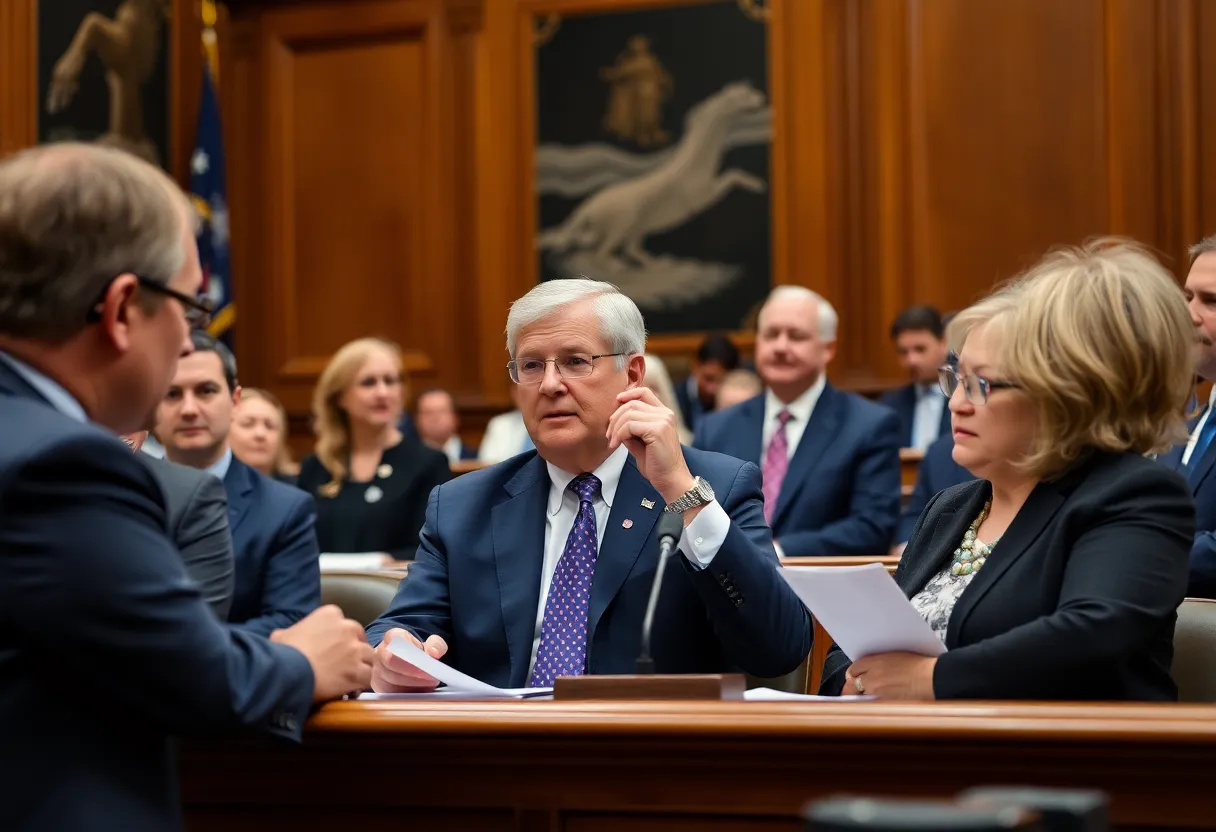News Summary
Republican leaders are intensifying their efforts to challenge California’s plans to ban new gas-powered vehicles by 2035, aiming to override ambitious clean air regulations. This legislative push has seen cross-party support from some Democrats, highlighting divisions on environmental issues. The use of the Congressional Review Act is being considered, but constitutional challenges loom, particularly regarding the role of the Senate parliamentarian and the implications for future legislative practices.
GOP Leaders Challenge California’s Clean Air Standards
Exciting developments are taking place in the political landscape as GOP leaders step up their efforts to challenge California’s ambitious plans to ban the sale of new gas-powered vehicles by 2035. This proposal aims to tackle climate change head-on, but it’s facing a substantial roadblock posed by Republican lawmakers who are keen on overturning the new regulations.
Understanding the Clean Air Act and EPA’s Role
So, what’s all the fuss about? California has the authority to set its own vehicle-emission standards, thanks to the Clean Air Act. This act enables the state to impose stringent regulations, provided they receive the green light from the Environmental Protection Agency (EPA). However, GOP leaders believe these standards shouldn’t stand, and they are rallying to make that happen in Congress.
Legislative Moves in the House
Recently, the conversation heated up in the House of Representatives where legislation aimed at supporting the Republican initiative was passed. A notable twist? 35 Democrats crossed party lines and voted with all Republicans to support this bill, showcasing the division within party lines on environmental issues.
Using the Congressional Review Act
Now, here’s where it gets a bit technical. Republicans are eyeing the Congressional Review Act (CRA) as a possible route to challenge California’s clean air standards. Typically, Senate legislation requires a 60-vote threshold to pass. However, the CRA appears to provide a loophole—a chance to roll back federal regulations with just a simple majority. Yet, this plan isn’t without its complications.
Defying the Senate Parliamentarian
The Senate parliamentarian, Elizabeth MacDonough, already weighed in on the matter. She has previously indicated that the CRA can’t be used to challenge California’s standards because they stem from an EPA waiver, not a direct regulation from a federal agency. This opinion aligns with the stance of the Government Accountability Office (GAO).
If Republicans choose to ignore the parliamentarian’s guidance, they could set a risky precedent that might enable them to fast-track other legislative priorities, potentially reshaping how the Senate operates in the future.
Concerns Among Democratic Senators
Unsurprisingly, this move has drawn a lot of concern from Democratic senators. For instance, some have voiced worries that if the Republican party goes against the parliamentarian’s authority, it could weaken the Senate’s power overall and pave the way for eliminating the filibuster—an important legislative safeguard.
In fact, a letter from 20 Senate Democrats cautioned that overriding the parliamentarian on this issue could embolden similar tactics for other legislation down the line. It’s a tense game, as both sides weigh the consequences of their moves.
The Parliamentarian’s Crucial Role
The role of the Senate parliamentarian is fundamental in determining which provisions can make it into budget reconciliation legislation. This process is meant to focus largely on spending and tax-related measures. MacDonough has shown her independence in the past, notably when she blocked attempts to include a $15 minimum wage and immigration reform in major relief packages.
Republican Justifications and Risks Ahead
Republicans argue that their challenge to California’s vehicle standards is warranted due to the unique regulatory structure in place. They believe that GAO’s position shouldn’t dictate Senate actions. However, GOP leaders like John Thune have acknowledged the potential drawbacks of disregarding the parliamentarian’s decisions. The fear is real—that doing so could undermine the filibuster, which is a crucial tool in the Senate.
A Narrow Path Ahead
With the current legislative agenda looking slim for the GOP, they’re leaning heavily on reconciliation. This method is tightly regulated, which adds another layer of complexity to their efforts. It’s clear that the filibuster’s current practice leads to an abundance of “silent filibusters,” stopping many proposals from even getting a fair chance on the Senate floor yet enforcing the de facto 60-vote requirement.
The Ongoing Filibuster Debate
The outcomes of recent elections are shaping the way both parties approach the filibuster. It’s evident that the dynamic changes based on which party holds power—a fascinating observation as we navigate through these intricate legislative waters.
As this situation unfolds, the balance of power in the Senate and the checks it imposes on legislative authority remain at the forefront of this ongoing debate. It’s a reminder of the important role that empathy, responsibility, and democratic processes play within our government structures.
Deeper Dive: News & Info About This Topic
- The Washington Post: Senate Filibuster and the Parliamentarian
- The New York Times: Cory Booker Speech Analysis
- Washington Monthly: The Filibuster Is Working
- Encyclopedia Britannica: Clean Air Act
- Google Search: California Clean Air Standards

Author: STAFF HERE PETERSBURG WRITER
The ST PETERSBURG STAFF WRITER represents the experienced team at HEREStPetersburg.com, your go-to source for actionable local news and information in St Petersburg, Pinellas County, and beyond. Specializing in "news you can use," we cover essential topics like product reviews for personal and business needs, local business directories, politics, real estate trends, neighborhood insights, and state news affecting the area—with deep expertise drawn from years of dedicated reporting and strong community input, including local press releases and business updates. We deliver top reporting on high-value events such as Grand Prix of St. Petersburg, Localtopia, and SHINE Mural Festival. Our coverage extends to key organizations like the St. Petersburg Area Chamber of Commerce and St. Pete Downtown Partnership, plus leading businesses in finance, manufacturing, and healthcare that power the local economy such as Raymond James Financial, Jabil, and Bayfront Health St. Petersburg. As part of the broader HERE network, including HEREJacksonville.com, HEREOrlando.com, HERETallahassee.com, and HERETampa.com, we provide comprehensive, credible insights into Florida's dynamic landscape.





